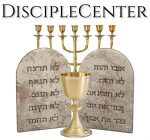Our Furniture
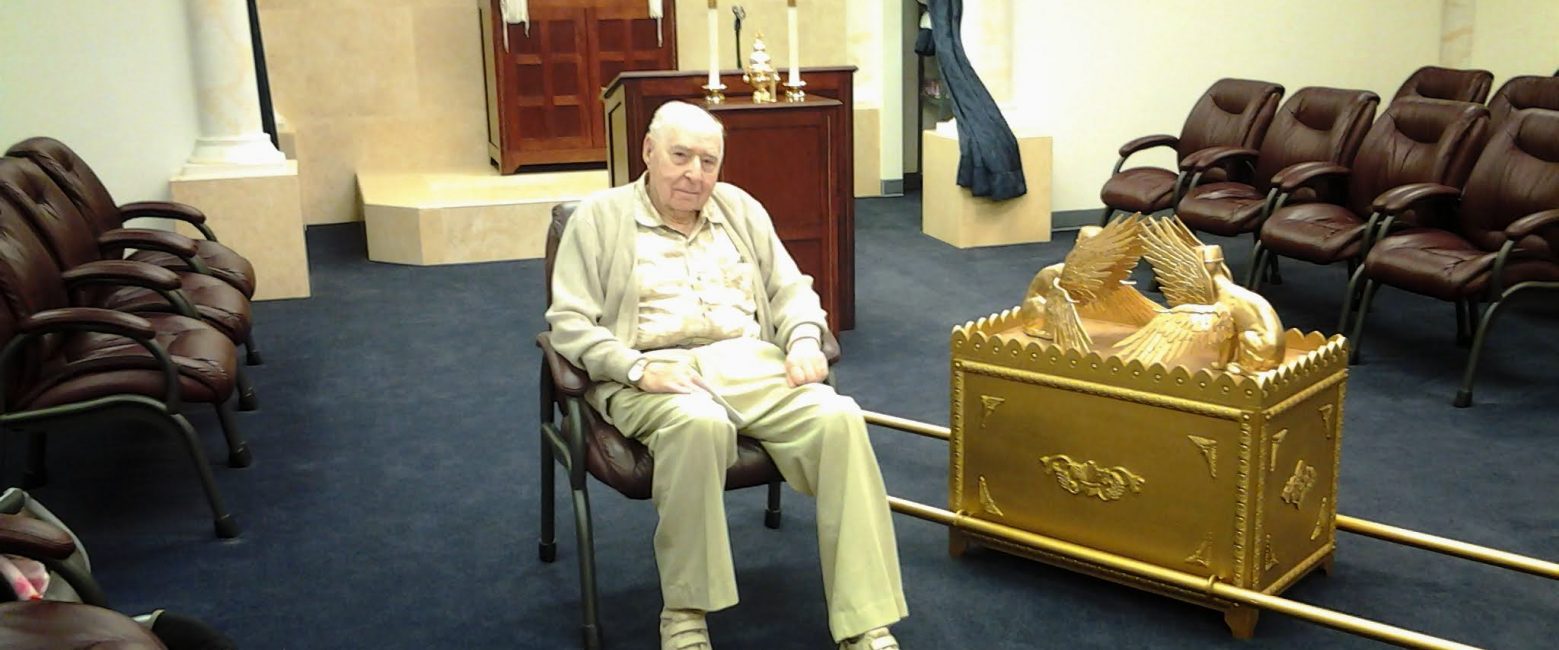
When you enter our facilities, you may feel very out of place. The furniture and layout of the Center is more like a synagogue than a church facility. This is by design. We hold to a Judeo-Christian Faith. We are both a local church that is connected to the Southern Baptist Convention and a congregation that is associated with the Messianic Jewish movement through the Union of Messianic Jewish Congregations. You may understand this better by looking at our doctrinal distinctives and our ministry philosophy.
All of the furniture is symbolic of biblical furniture and themes that remind us of the great biblical truths that are ours in the Messiah. We do not believe that this furniture is to be worshiped. They are symbols that contain meaning from the Bible that assist us in understanding and expressing our faith. As you will see, our services make use of the furniture to declare the truth of God‘s Word to us.
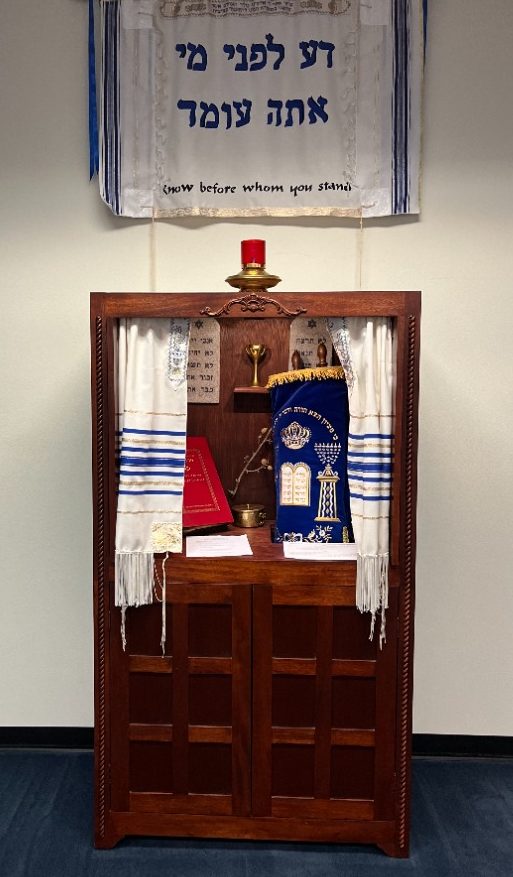
Ark of Aaron
As you enter the Center’s sanctuary, on the back wall farthest from you when you enter, will be an armoire-type piece of furniture. This is called the ark. It is related to the Ark of the Covenant that was located in the Holy of Holies in the Tabernacle and Temple, but it is not the same as the ark that Moses made. This type of ark, found in Jewish synagogues, is called the Ark of Aaron. In traditional synagogues, this ark holds the Torah Scroll (the five books of Moses) which include Genesis, Exodus, Leviticus, Numbers, and Deuteronomy. Our ark at the Center contains the Ten Commandments and a wine chalice to represent the older and newer covenants. It also includes a Torah Scroll and a Codex of The Gospels that represents Yeshua (Jesus) as our Great High Priest who sits at the right hand of God as our advocate. We also have a budding almond branch, which represents the rod of Aaron that testifies of God's choice in whom will lead his people; Moses and Aaron of the old covenant who pre-shadowed, the son of God, Yeshua, in the New Covenant. Sitting atop the ark is a candle that is lit before every service representative of the eternal flame of God's glory and presence among us. And, hanging on the wall above the candle and ark is a banner that reads “da lifnei mi atah omed,” be aware before whom you stand.
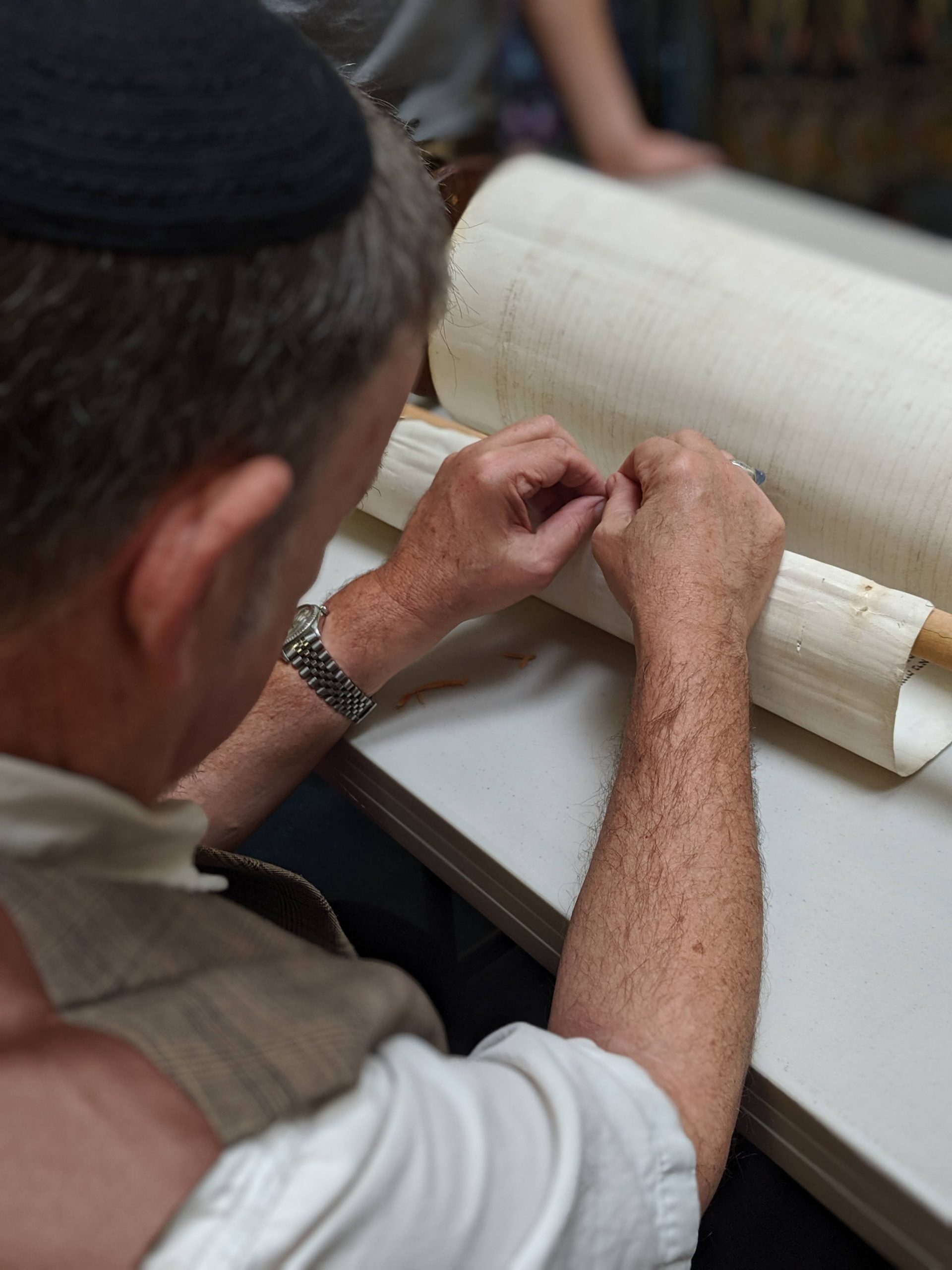
Our Torah Scroll
Inside our ark is a Torah Scroll. Every service we take it out, along with The Gospels, where they are processionally placed under the cross. We are so grateful to have been able to purchase this scroll, and in so doing, prevented it from being cut into pieces and sold as art. Our friend, Rabbi Dr. Michael Schiffman, who is the Executive Director of Chevra USA, flew in from Florida to restore the parchment and sew it back onto the wooden rollers.
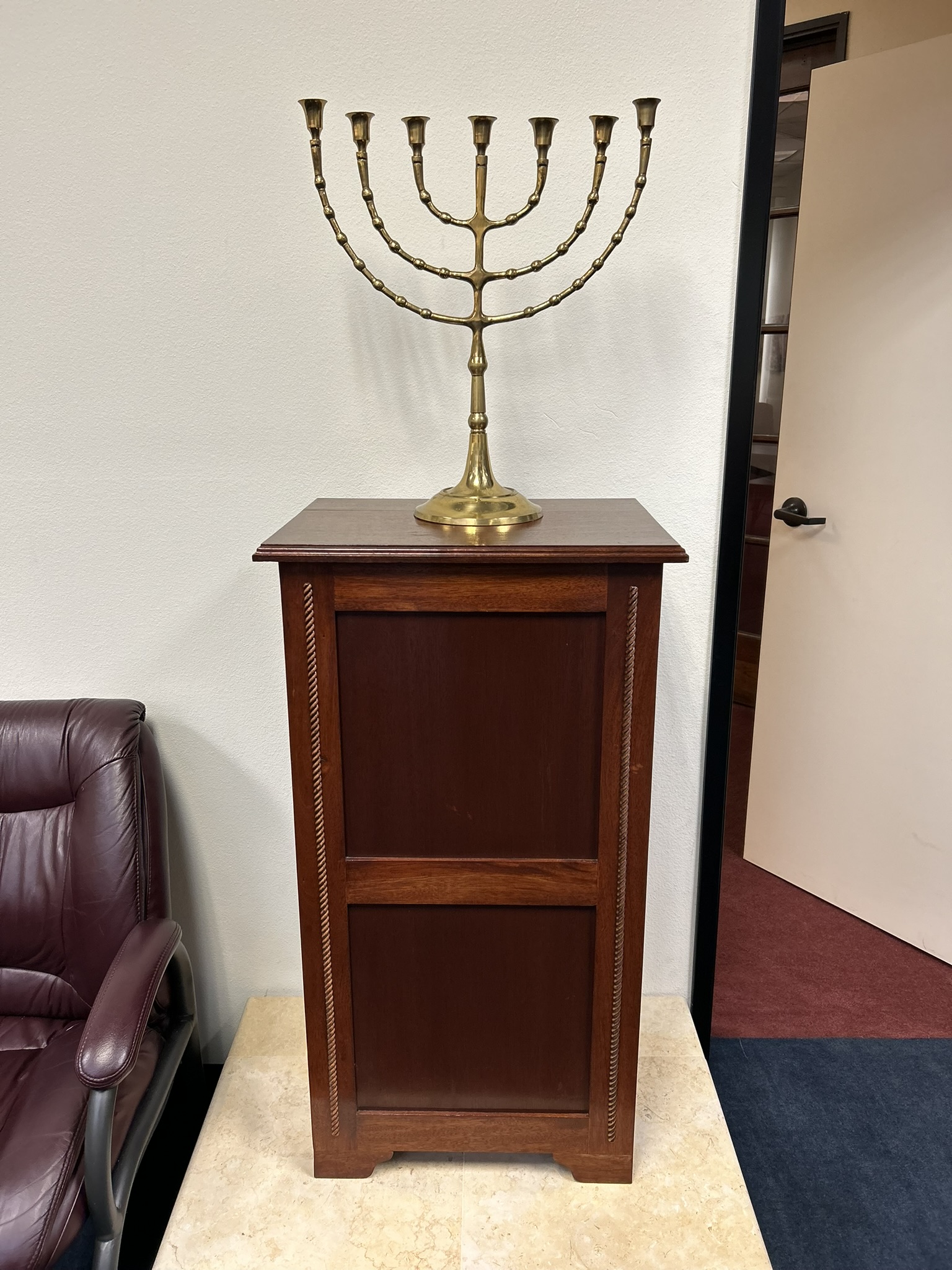
Seven Branch Candlestick
To the left of our ark is the stand with the seven branch candlestick called a menorah. This lamp stand was also part of the Temple and Tabernacle. It stood in the holy place and was attended by the priests daily. This symbol is often used to represent Israel as the people of God. In addition, the New Testament book of Revelation describes the churches as menorahs.
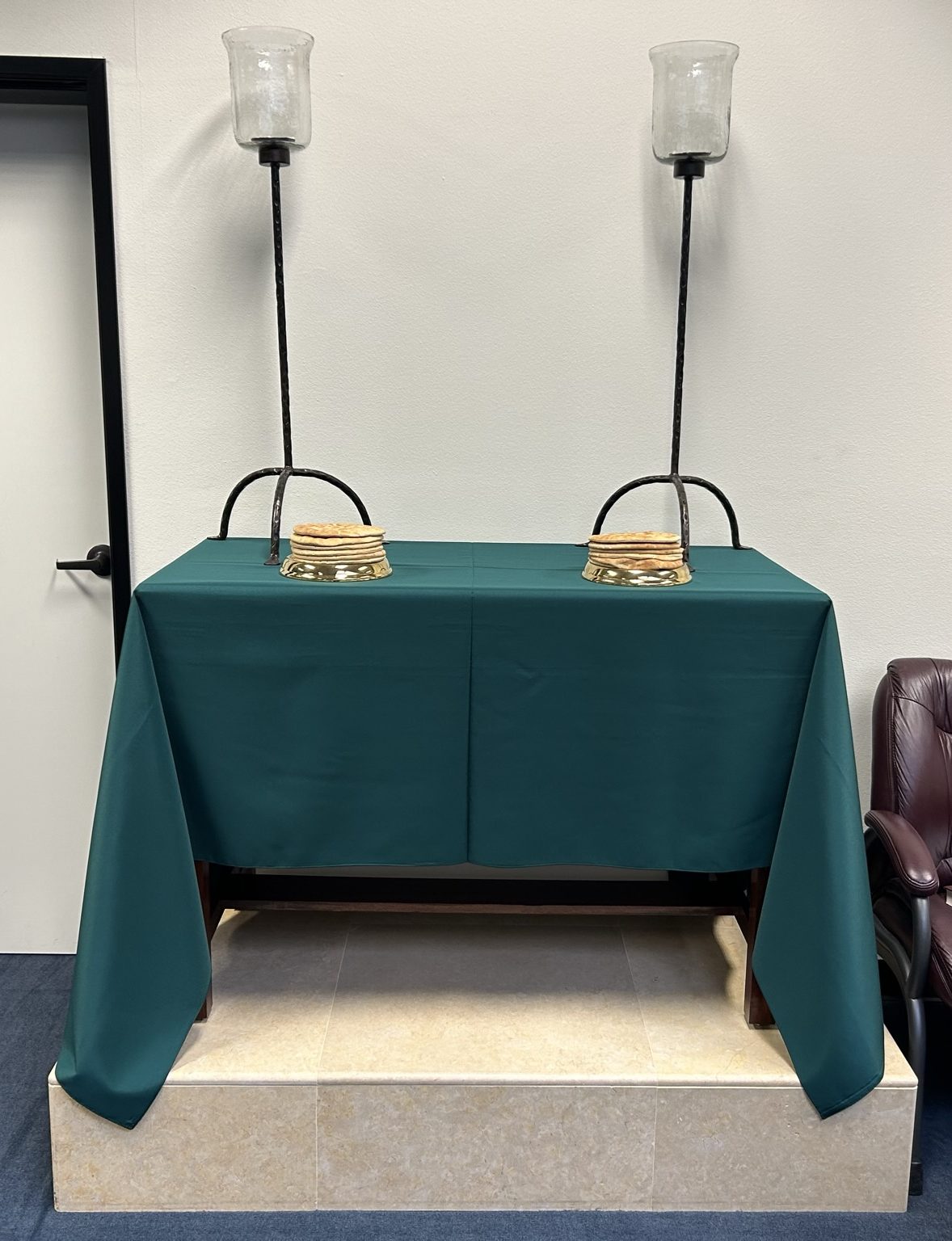
Table of Showbread
On the right of our ark is the table of showbread. In the Temple and Tabernacle, this table stood opposite the menorah in the holy place. On it were the 12 loaves of unleavened bread as a reminder of the 12 tribes of Israel. This table ultimately became the basis of the table-style altars in Christian churches used for the Lord’s Supper which makes use of bread to represent both the actual body of Christ and the communion of believers.
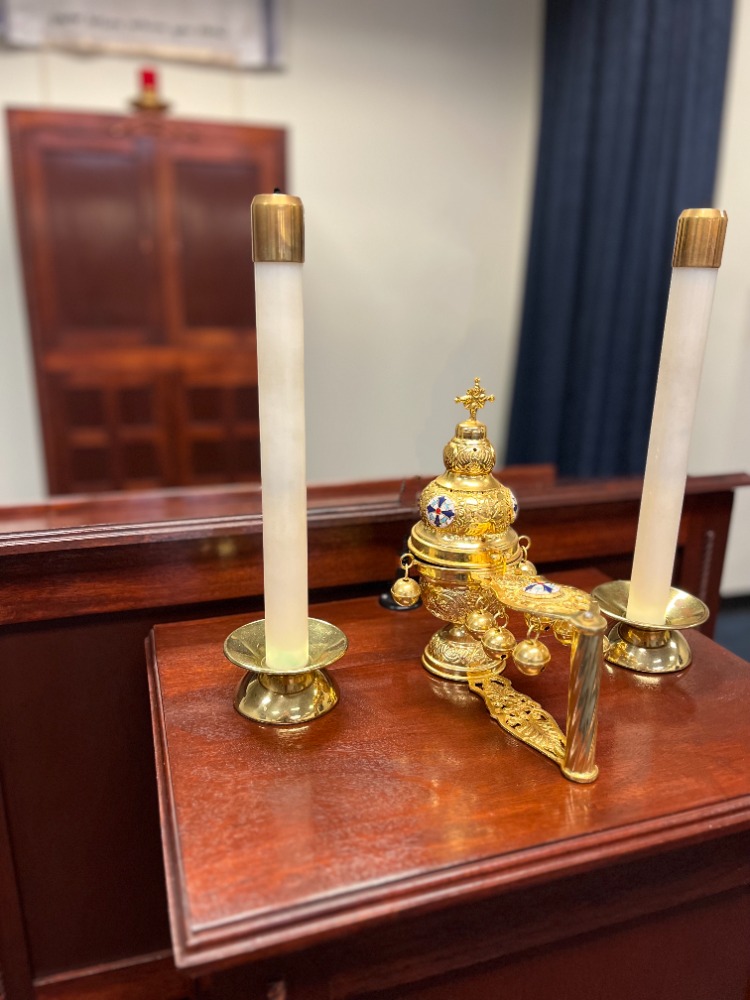
Prayer Altar
Directly in front of our ark is the prayer altar. This is related to the altar of incense that stood before the veil of the temple separating The Holy Place from the Holy of Holies. On our altar, we have placed a sensor that represents the biblical notion that our prayers rise to God as incense.
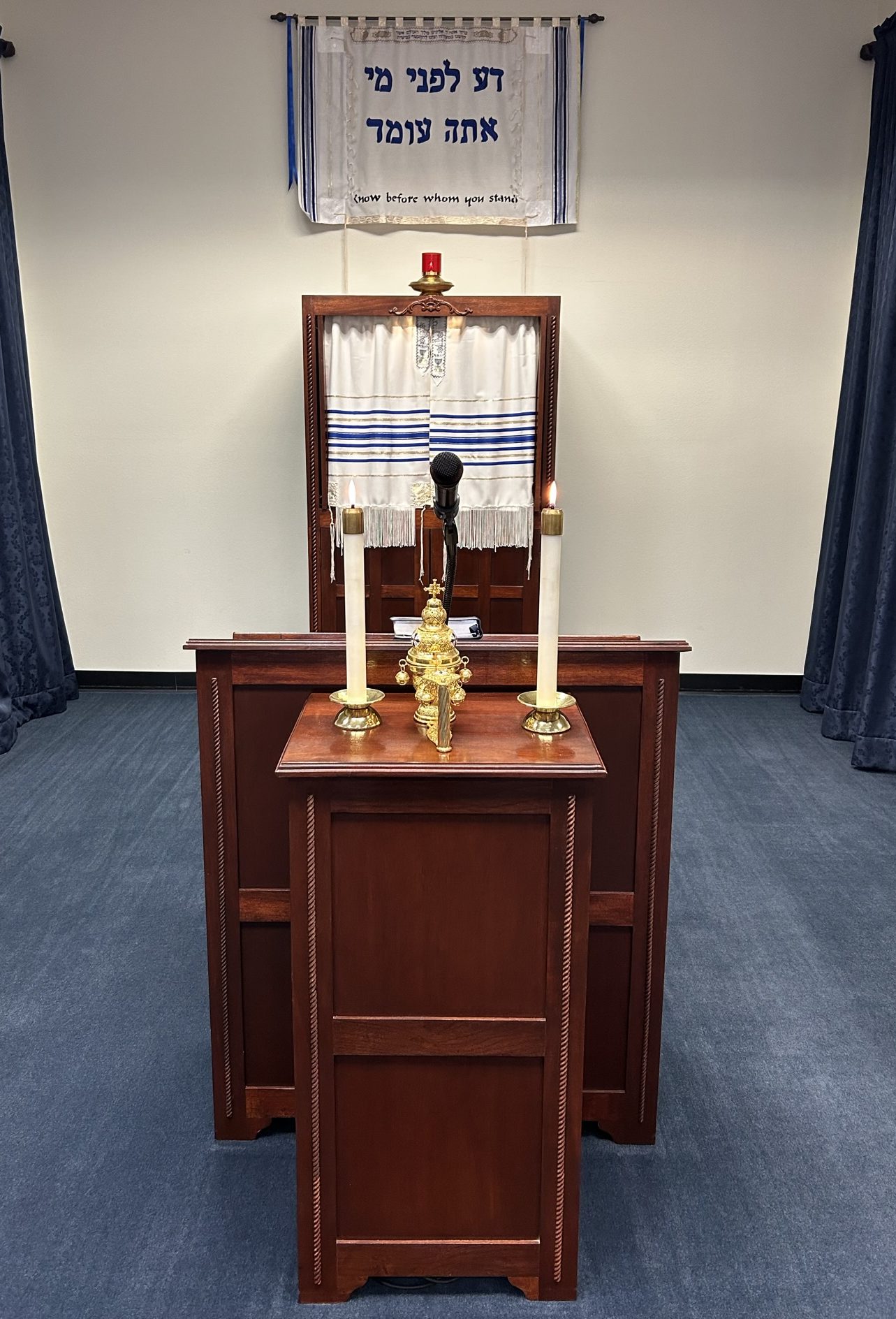
The Bema Seat
Just between the ark and the prayer altar is a pulpit called the bema seat. This is the place of judgment, instruction, and discernment. The first pulpit of this type was built in the time of Ezra. In our Center, it is from here that the pastor gives his sermon.
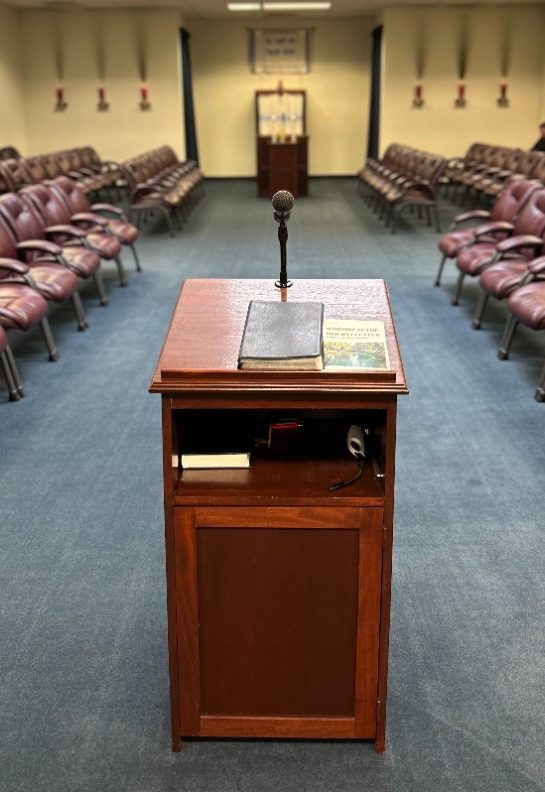
The 2nd Pulpit
In the center-front entrance of the sanctuary you will notice an open pulpit. This pulpit faces our Ark and it is from here that congregants read scriptures, give testimonies, and lead hymns and songs of praise. It is done from this location specifically, so that those who read, pray, and testify are reminded that they are in the presence of God symbolically, and to remember before whom they stand.
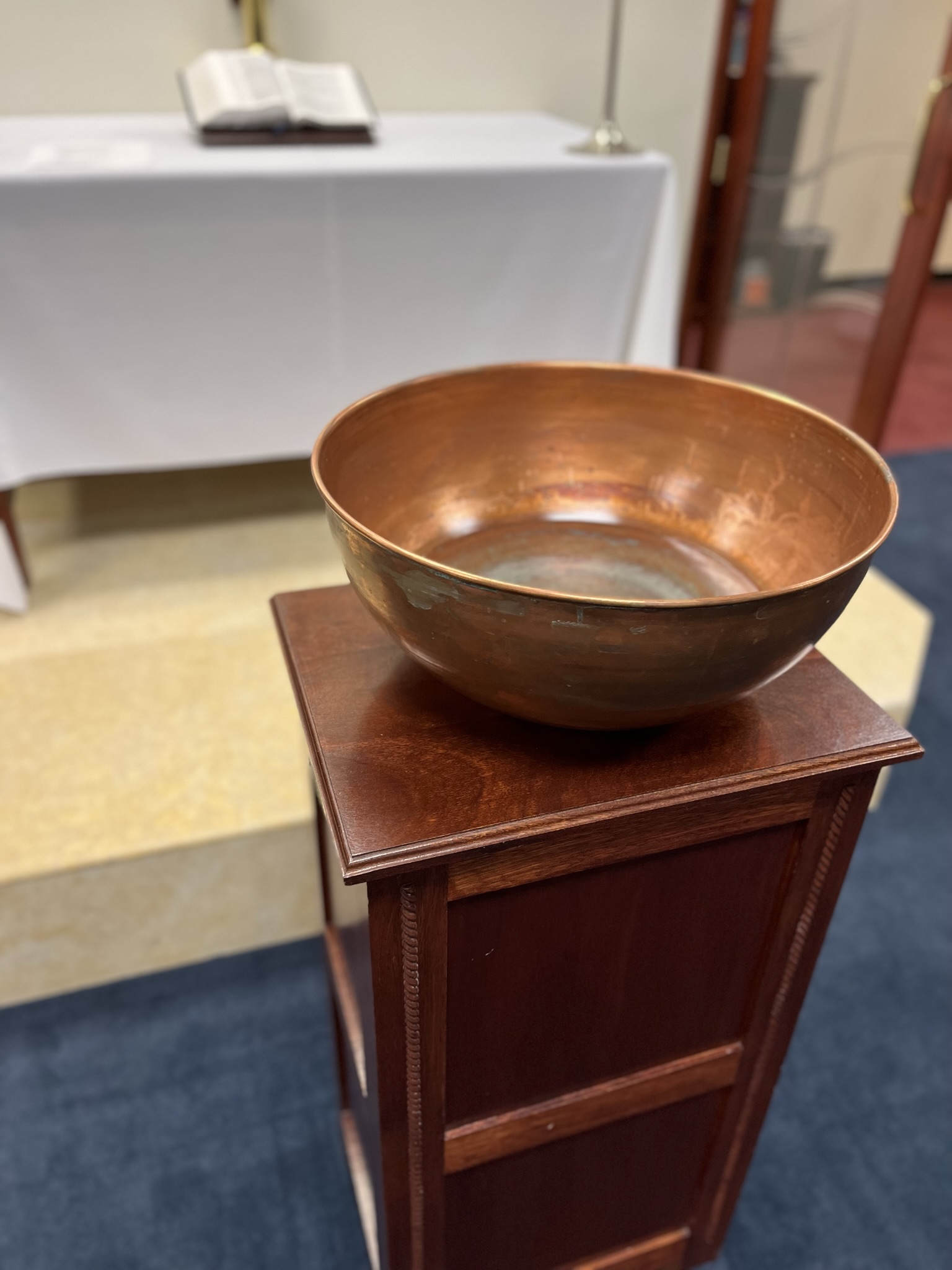
The Laver
Soon upon entering, behind the second pulpit is a bronze laver containing water and oil. Just as the outer court of Temple and Tabernacle had a laver used by the priests to ritually wash and purify themselves and was the last object encountered before entering the holy place, we too are reminded of the purification from sin that has been offered to us through Christ’s sacrifice.
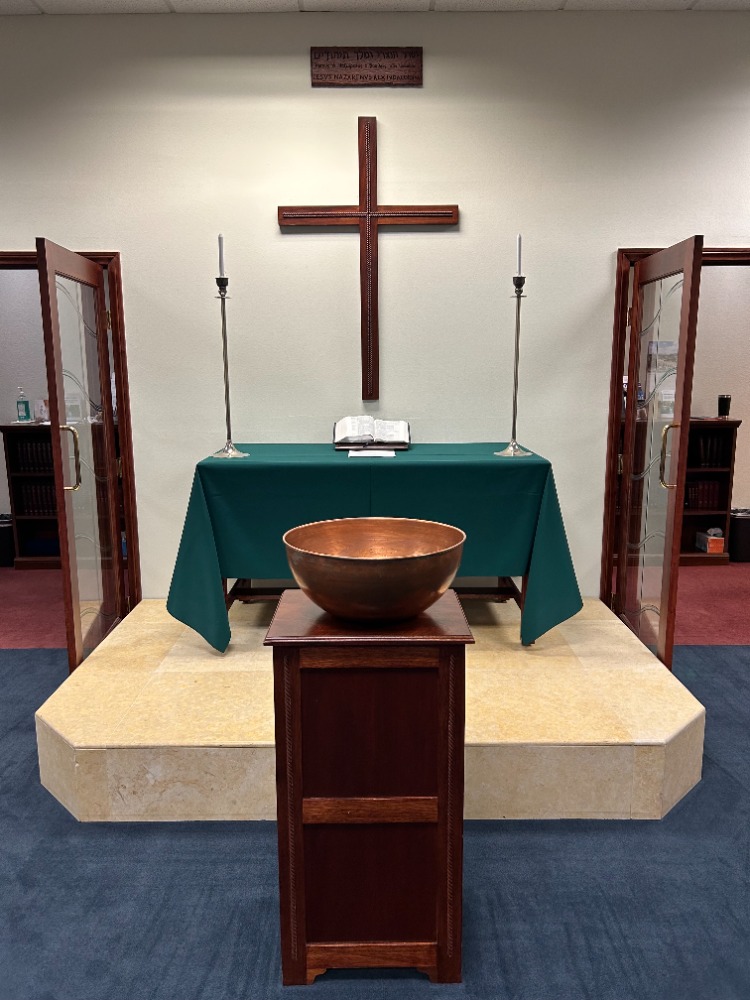
The Cross Through Which we come
On the inside of the same wall that you enter the sanctuary and behind the laver is hung a handmade cross. This serves as a reminder of how we have been given access to the Father, through the veil of the flesh of His son. Now, we may enter into the presence of the Lord with confidence because of the blood of Yeshua.
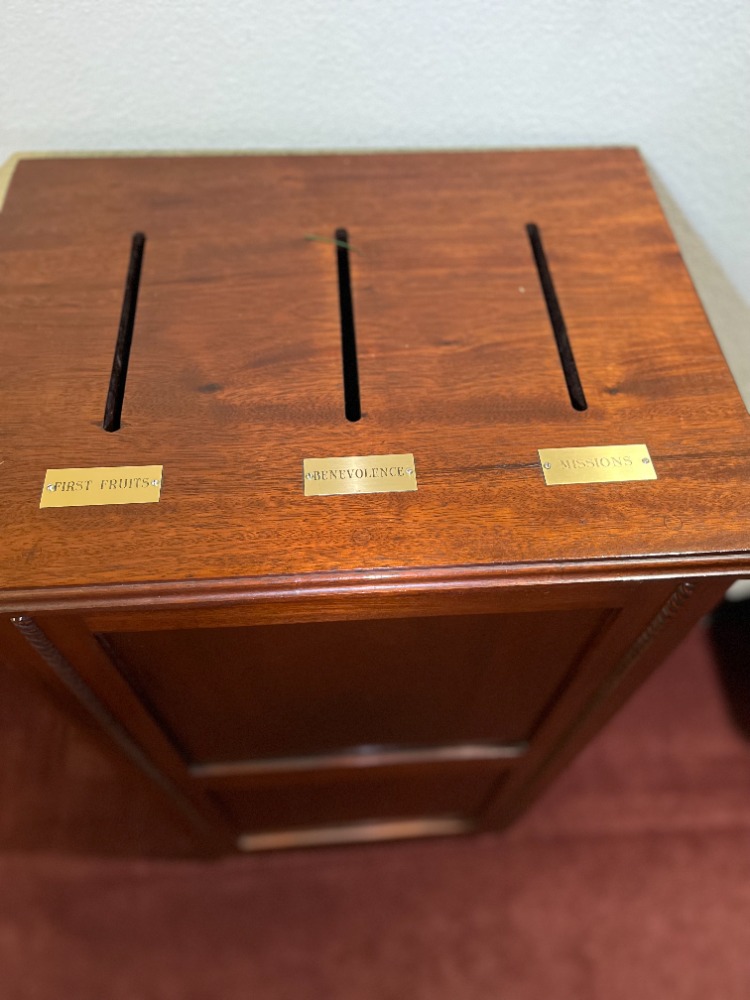
The Offering Box
The offering box is kept just outside of the sanctuary in the foyer. This box comes from the temple period and was a part of the area of the women’s court. Jesus stood and watched as people placed their offerings in the box. He taught his disciples about giving, and this is where the story of the Widow’s Mite took place. We use this box for receiving First Fruits and Benevolence tithes, as well as offerings for the participation in missions.
